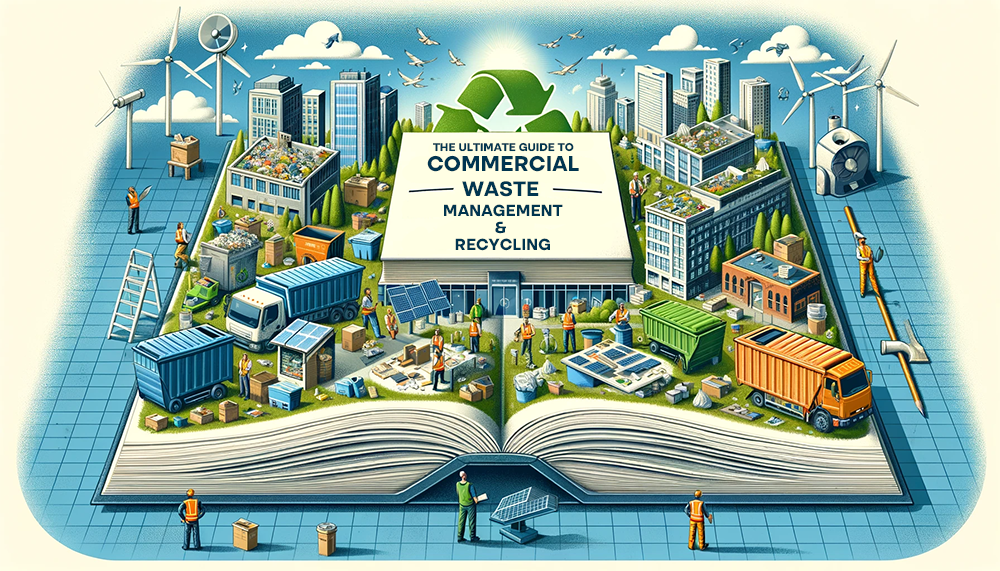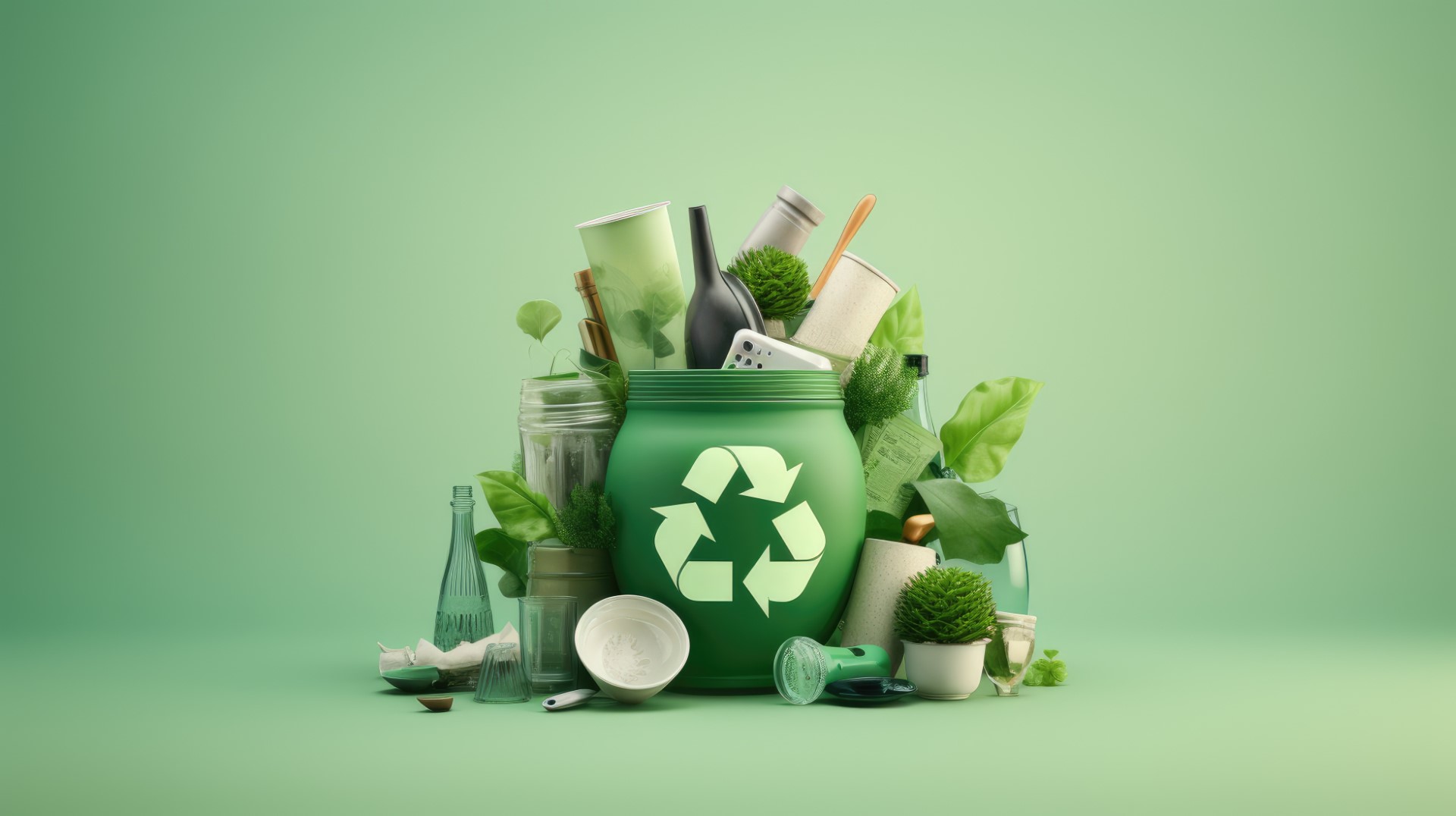The Function of Recycling Lives Services in Supporting Regional Communities
Wiki Article
Checking Out Different Sorts Of Waste in Modern Waste Administration Systems
The modern landscape of waste management involves navigating an intricate selection of waste kinds, each calling for specialized handling and disposal techniques to reduce ecological influences. Metropolitan solid waste, contaminated materials, digital waste, and natural waste each existing distinct obstacles and opportunities for resource healing. Innovative solutions such as clever waste bins and waste-to-energy technologies are becoming vital tools in improving performance and sustainability. Understanding these waste kinds is important for promoting public understanding and encouraging active participation in sustainable techniques. What methods can effectively address these varied types of waste while advertising a circular economic climate?Local Strong Waste
Community solid waste, typically described as household trash or garbage, includes a variety of discarded materials produced by household, business, and institutional resources within a district. This waste stream generally consists of products such as product packaging, food scraps, yard trimmings, paper, plastics, textiles, and disposed of home items. The administration of metropolitan solid waste is a crucial component of metropolitan planning and public health and wellness, demanding efficient collection, transportation, and disposal systems.Reliable waste monitoring systems are developed to minimize ecological influence while making the most of resource recovery. Composting organic waste, such as food scraps and backyard trimmings, not just minimizes garbage dump use but likewise creates valuable soil amendments.
Towns must also resolve the financial and logistical challenges related to waste management. Carrying out pay-as-you-throw systems, enhancing public awareness, and spending in technology can dramatically enhance waste diversion rates. By incorporating these techniques, towns can cultivate lasting areas, reduce greenhouse gas discharges, and save natural resources.
Contaminated Materials

Efficient hazardous waste management entails several important actions: recognition, therapy, disposal, and partition. Identification involves the classification of waste based upon its unsafe residential or commercial properties. Partition makes sure that hazardous products are saved individually from non-hazardous waste to avoid cross-contamination. Treatment approaches, such as chemical neutralization, incineration, and stablizing, are utilized to minimize the poisoning, quantity, or movement of the waste. Disposal alternatives, including safe and secure landfills and underground storage, are picked to ensure lasting control.
Regulative frameworks, such as the Resource Conservation and Recuperation Act (RCRA) in the United States, supply guidelines and standards for contaminated materials management. Adherence to these guidelines, coupled with developments in waste therapy modern technologies, is vital in alleviating the threats linked with contaminated materials.
Digital Waste
Electronic waste, generally described as e-waste, stands for a rapidly growing difficulty in waste administration systems globally. This kind of waste includes thrown out electronic gadgets and devices such as smartphones, computers, tvs, and various other electronic devices. The quick pace of technical improvement, paired with reducing item lifespans and customer demand for the most recent tools, has actually greatly raised the volume of e-waste generated yearly.E-waste is particularly troublesome as a result of its complicated make-up, commonly consisting of harmful compounds like go to this web-site lead, mercury, and cadmium, which pose considerable ecological and wellness threats otherwise effectively taken care of. Alternatively, e-waste also contains useful products such as copper, silver, and gold, which can be recovered and reused. The double nature of e-waste-- both harmful and valuable-- demands specialized handling, recycling, and disposal processes.
Effective e-waste management includes strict regulative frameworks, durable collection systems, and progressed reusing modern technologies. basics Public understanding and engagement are essential, as incorrect disposal techniques, such as unlawful dumping and casual recycling, exacerbate ecological contamination and health dangers. Improving e-waste monitoring practices is vital for minimizing ecological effect and recouping valuable resources in a progressively digital globe.

Organic Waste
Organic waste, making up kitchen scraps, yard trimmings, and agricultural residues, stands for a substantial section of the international waste stream. This kind of waste is eco-friendly, suggesting it can be damaged down by bacteria right into simpler natural compounds. Regardless of its possibility for natural disintegration, improper monitoring of organic waste can result in negative environmental effects, consisting of the exhaust of greenhouse gases such as methane, which contribute to environment change.Reliable monitoring of natural waste is essential for lessening these environmental impacts (recycling lives services). Composting is a commonly adopted method, transforming organic waste right into nutrient-rich garden compost that can boost dirt wellness and agricultural performance. Additionally, anaerobic food digestion is an arising technology that transforms organic waste into biogas, a renewable resource resource, and digestate, which can be made use of as plant food
Municipalities and waste management entities have to execute durable natural waste collection and therapy programs to make best use of the benefits of these procedures. Public education projects can also play a crucial role in encouraging households and services to different organic waste from other kinds of waste. By focusing on the monitoring of organic waste, societies can decrease garbage dump usage, lower greenhouse gas discharges, and develop valuable by-products for farming use.

Cutting-edge Waste Management
In the world of waste management, cutting-edge methods are transforming exactly how cultures handle their refuse, going for sustainability and efficiency. These advancements include a series of innovations and practices that improve reusing rates, reduce landfill dependency, and lower ecological effect. One noticeable advancement is the execution of clever waste containers furnished with sensors that check fill levels and enhance collection paths. This not only minimizes fuel usage yet likewise minimizes greenhouse gas discharges.
One more noteworthy growth is the adoption of waste-to-energy (WtE) innovations. By transforming non-recyclable waste right into useful power through processes such as incineration and anaerobic food digestion, WtE click this link reduces garbage dump concern and provides a renewable resource source. Developments in chemical reusing permit for the breakdown of complex plastics right into their original monomers, making it possible for the production of brand-new, high-grade plastic products.
In addition, the round economy version is getting traction, emphasizing the design of items and systems that prioritize reusability and resource efficiency. This alternative method urges markets to minimize waste generation from the beginning. Through these cutting-edge approaches, contemporary waste monitoring systems are not just attending to the prompt obstacles of garbage disposal but also paving the means for a much more sustainable future.
Final Thought
A thorough understanding of municipal strong waste, contaminated materials, digital waste, and natural waste, paired with the application of cutting-edge waste monitoring remedies, is vital for mitigating ecological impacts. Incorporating innovations such as smart waste bins and waste-to-energy systems can enhance performance and sustainability. Reliable waste monitoring techniques not only foster resource recuperation however also promote public awareness and engagement, eventually adding to the advancement of a circular economic situation.The modern landscape of waste management involves browsing an intricate array of waste types, each needing specialized handling and disposal techniques to reduce ecological impacts. Metropolitan solid waste, dangerous waste, digital waste, and natural waste each existing distinct challenges and chances for source recuperation.Electronic waste, commonly referred to as e-waste, represents a quickly growing challenge in waste administration systems worldwide. Via these ingenious approaches, modern-day waste management systems are not only resolving the immediate obstacles of waste disposal yet additionally paving the means for a more sustainable future.
A detailed understanding of community solid waste, dangerous waste, electronic waste, and organic waste, paired with the application of cutting-edge waste administration options, is necessary for reducing ecological effects. (recycling lives services)
Report this wiki page